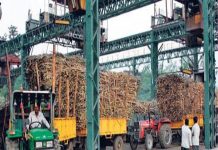While addressing the Co-generation Association of India’s award distribution function yesterday, Hon. Shri Sharad Pawar ji made a compelling appeal to the Central Government to include bagasse-based co-generation projects of sugar factories under the ambit of India’s Bio-Energy Mission. His demand is both timely and strategic, considering the significant contribution of the sugar sector to India’s renewable energy ecosystem.
Why the bio-energy mission needs the sugar industry
India’s Bio-Energy Mission, spearheaded by the Ministry of New and Renewable Energy (MNRE), is designed to boost the use of biomass, bio-CNG, bio-ethanol, and other renewable fuels to meet the rising energy demand in a sustainable manner. Its objectives include:
Increasing the share of bio-energy in India’s energy mix
Reducing reliance on fossil fuels and imported energy
Creating green jobs and promoting rural energy access
Enabling a circular economy through waste-to-energy models
However, despite being a reliable producer of green power, bagasse-based co-generation projects are not yet formally included in the Bio-Energy Mission’s framework. This gap limits sugar mills’ access to central incentives, green energy certifications, and policy support.
Sugar Industry : Powering Rural India Sustainably
The Indian sugar industry is the second-largest agro-based sector after textiles. Every crushing season, it generates massive quantities of bagasse—a fibrous residue left after sugarcane crushing. Instead of treating this as waste, many forward-looking sugar factories have invested in high-pressure co-generation plants that produce steam and electricity. These sugar factories often export surplus power to the State grid, contributing to rural electrification and energy security.
Currently, bagasse-based co-generation accounts for over 7000 MW of installed capacity across India—an untapped goldmine for India’s renewable energy ambitions.
Benefits if inclusion under bio-energy mission:
1. Recognized Renewable Power Source: Including co-generation under the mission would formally acknowledge the role sugar mills are playing in India’s green energy transformation.
2. Boost to Rural Economy: The surplus revenue earned from power sales is often shared with sugarcane growers, ensuring better returns and rural prosperity.
3. Environmentally Clean Energy: Bagasse-based electricity is carbon neutral and helps reduce stubble burning, fossil fuel usage, and emissions.
4. Enhancing India’s Power Mix : Amid rising energy demand and grid stress, bagasse co-gen can serve as a reliable peak-hour green energy source, particularly during the crushing season.
5. Synergy with Other Bio-Energy Products: Sugar factories already produce ethanol, biogas, bio-CNG, and organic compost—making them ideal multi-feed, multi-output bio-energy hubs.
POLICY PUSH NEEDED: Hon. Sharad Pawar ji’s call for inclusion must be seen as a wake-up call to policymakers. Sugar factories, particularly in states like Maharashtra, Uttar Pradesh, and Karnataka, have the infrastructure, feedstock, and capability to emerge as mini green power stations.
Inclusion under the Bio-Energy Mission would open doors to:
Priority lending for co-gen expansions
Carbon credit opportunities
Renewable Energy Certificates (RECs)
Better integration with state and national grid planning
As India targets net-zero by 2070, it cannot afford to ignore high-potential, low-hanging fruit like bagasse-based co-generation. The sugar industry has already demonstrated its commitment to cleaner energy. What it needs now is the right policy support. Recognising bagasse-based power under the Bio-Energy Mission is not just a demand—it’s a national opportunity.
P.G. Medhe is the former Managing Director of Shri Chhatrapati Rajaram Sahakari Sakhar Karkhana Ltd and sugar industry analyst. He can be contacted at +91 9822329898.












